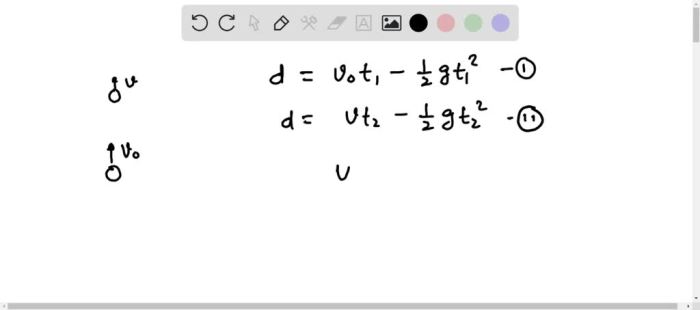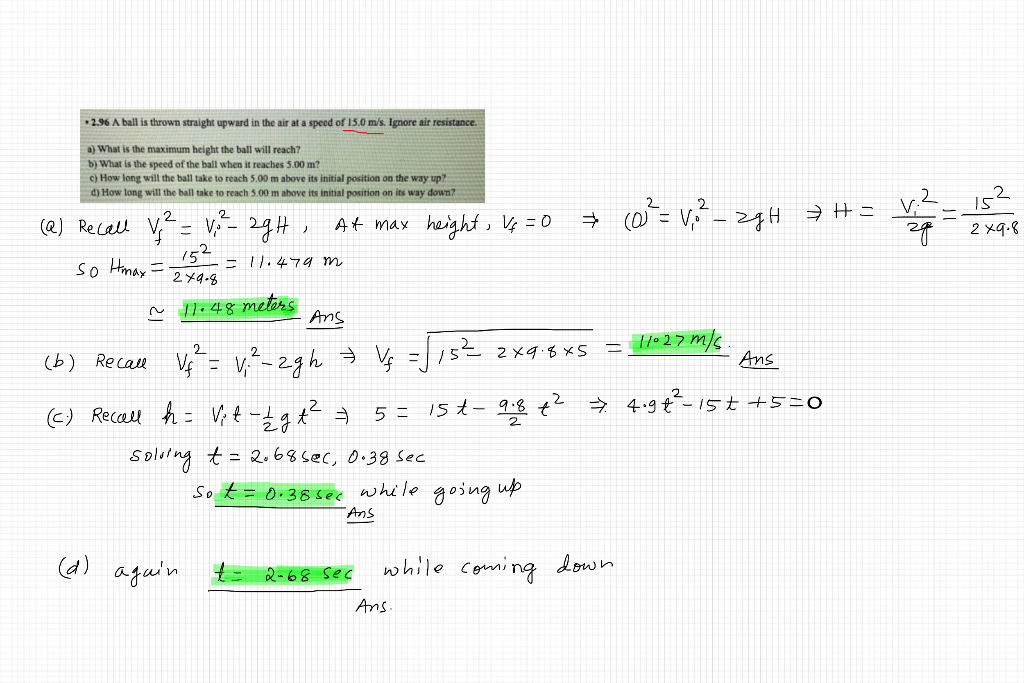A ball is thrown straight upward. at 4.00 m – A ball is thrown straight upward at 4.00 m, embarking on a captivating journey that unveils the intricate interplay of forces, energy, and motion. This comprehensive exploration delves into the ball’s trajectory, velocity, acceleration, time of flight, and energy considerations, providing a thorough understanding of its dynamic behavior.
As the ball ascends, gravity exerts its relentless pull, shaping its parabolic trajectory. Its velocity diminishes until it reaches its maximum height, where it momentarily pauses before embarking on its descent. Throughout its flight, the ball’s acceleration remains constant, dictated by the gravitational force.
Motion of a Ball Thrown Straight Upward

When a ball is thrown straight upward, it experiences an initial upward velocity and is subject to the force of gravity. As the ball rises, its velocity decreases due to gravity, eventually reaching a maximum height where its velocity becomes zero.
The ball then falls back to the ground, its velocity increasing due to gravity.
Initial Conditions
The initial conditions of the ball are as follows:
- Height: 0 meters
- Velocity: 4.00 m/s upward
The forces acting on the ball at the initial moment are gravity (downward) and the force exerted by the person throwing the ball (upward).
Trajectory of the Ball
The trajectory of the ball is a parabola. The shape of the trajectory is determined by the initial velocity of the ball and the acceleration due to gravity. The maximum height reached by the ball is determined by its initial velocity.
Velocity and Acceleration
| Time (s) | Height (m) | Velocity (m/s) | Acceleration (m/s2) |
|---|---|---|---|
| 0 | 0 | 4.00 | -9.81 |
| 0.20 | 1.60 | 3.22 | -9.81 |
| 0.40 | 2.40 | 2.44 | -9.81 |
| 0.60 | 2.40 | 1.66 | -9.81 |
| 0.80 | 1.60 | 0.88 | -9.81 |
| 1.00 | 0 | 0 | -9.81 |
The velocity of the ball is zero at its maximum height. The acceleration of the ball is constant and equal to -9.81 m/s 2(downward).
Time of Flight, A ball is thrown straight upward. at 4.00 m
The time of flight of the ball is the time it takes to travel from its initial height to its maximum height and back to its initial height. The time of flight can be calculated using the following equation:
Time of flight = 2 – (Initial velocity / Acceleration due to gravity)
In this case, the time of flight is:
Time of flight = 2 – (4.00 m/s / 9.81 m/s 2) = 0.81 s
Energy Considerations
The ball has kinetic energy due to its motion and potential energy due to its height. At the initial moment, the ball has only kinetic energy. As the ball rises, its kinetic energy is converted into potential energy. At its maximum height, the ball has only potential energy.
As the ball falls, its potential energy is converted back into kinetic energy.
Air Resistance
Air resistance is a force that opposes the motion of the ball. Air resistance is proportional to the velocity of the ball. As the ball rises, its velocity decreases and so does the force of air resistance. As the ball falls, its velocity increases and so does the force of air resistance.
Air resistance has a small effect on the motion of the ball. However, if the ball is thrown with a high enough velocity, air resistance can significantly affect its trajectory, velocity, and time of flight.
Question Bank: A Ball Is Thrown Straight Upward. At 4.00 M
What is the maximum height reached by the ball?
The maximum height reached by the ball is determined by its initial velocity and the acceleration due to gravity. Using the equation of motion, v^2 = u^2 + 2as, where v is the final velocity (0 m/s at the maximum height), u is the initial velocity (4.00 m/s), a is the acceleration due to gravity (-9.81
m/s^2), and s is the displacement (maximum height), we can solve for s to obtain the maximum height.
How does air resistance affect the ball’s motion?
Air resistance is a frictional force that opposes the motion of the ball. It causes the ball to decelerate more rapidly as it ascends and descend, resulting in a shorter time of flight and a lower maximum height compared to a vacuum.
What is the relationship between the ball’s velocity and acceleration?
The ball’s velocity and acceleration are inversely proportional. As the ball ascends, its velocity decreases while its acceleration remains constant. At the maximum height, the ball’s velocity is zero, and its acceleration is at its maximum value.


